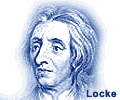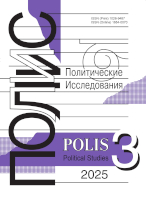Formal Models in International Studies
Degterev D.A.,
Dr. Sci. (Polit. Sci.), Cand. Sci. (Econ.), Head, Department of Theory and History of International Relations, RUDN University; Scientific Supervisor, Center for Applied Analysis of International Transformation, RUDN University; Professor, World Economy Department, MGIMO University, degterev-da@rudn.ru
elibrary_id: 237630 | ORCID: 0000-0001-7426-1383 | RESEARCHER_ID: D-9134-2014
DOI: 10.17976/jpps/2017.04.04
Degterev D.A. Formal Models in International Studies. – Polis. Political Studies. 2017. No. 4. https://doi.org/10.17976/jpps/2017.04.04
The article investigates the formal models as a method of analysis in international studies. The importance of this type of models in writing articles for world leading high-ranking journals from Scopus list is shown. The author reveals the main challenges of interdisciplinary synthesis related to the construction of formal models. The problem of identifying the actors of international relations is revealed, including the assessment of actor’s involvement in a concrete international conflict (or process) in the context of the concepts of defensive and offensive realism, as well as of real and of latent (potential) power. The decrease in the influence of the state as the primary actor in international relations, and the increase of influence of new types of actors are shown, including international terrorist networks (led by IS), political parties, media and NGOs in the context of post-modernism, global business structures. At the national level, the main actors are illustrated both by the example of countries with a developed civil society and a market economy, and by that of the traditional non-Western society. The question of levels of analysis in international relations, as well as agent-structure problem are illustrated by concrete cases from modern international relations. The author describes a model of “nested” politics. The main types of models used in international studies (game theoretic, econometric, network analysis, simulation) are indicated as well as their shortcomings. Two kinds of simulation models – system dynamics and agent-based modeling are described. It is noted that the agent-based modeling is carried out mainly in the framework of the constructivist paradigm of international relations theory.
References
Afontsev S.A. Politicheskie rynki i ekonomicheskaya politika [Political Markets and Economic Policies]. Moscow: KomKniga. 2010. 384 p. (In Russ.)
Akimov V.P., Lukov V.B., Parshin P.B., Sergeev V.M. Cuban Missile Crisis: Experience of Modeling. – USA and Canada: Economics – Politics – Culture. 1989. No. 5. P. 36-49. (In Russ.)
Allan P., Dupont C. International Relations Theory and Game Theory: Baroque Modeling Choices and Empirical Robustness. – International Political Science Review. 1999. Vol. 20. No. 1. P. 23-47. DOI: https://doi.org/10.1177/0192512199201002
Axelrod R. The Complexity of Cooperation: Agent-Based Models of Competition and Collaboration. Princeton: Princeton University Press. 1997. 248 p.
Axelrod R. The Evolution of Cooperation. Cambridge: Basic Books. 2006. 264 p.
Boulding K. The Economics of the Coming Spaceship Earth. – Environmental Quality in a Growing Economy. Ed. by H. Jarrett. Baltimore: Johns Hopkins University Press. 1966. P. 3-14.
Braumoeller B. The Great Powers and the International System: Systemic Theory in Empirical Perspective (Cambridge Studies in International Relations). Cambridge: Cambridge University Press. 2013. 297 p.
Camerer C. Progress in Behavioral Game Theory. – Journal of Economic Perspectives. 1997. Vol. 11. No. 4. P. 167-188. DOI: https://doi.org/10.1257/jep.11.4.167
Cederman L.-E. Agent-Based Modeling in Political Science. – The Political Methodologist. 2001. Vol. 10. No. 1. P. 16-22.
Degterev D.A. Network Analysis of International Relations. – Vestnik of Saint Petersburg University. Political Science. International relations. 2015. No. 4. P. 119-138. (In Russ.)
Degterev D.A., Degterev A.Kh. Game Theory and International Relations. – Mirovaya ekonomika i mezhdunarodnye otnosheniya. 2011. No. 2. P. 79-89. (In Russ.)
Degterev D.A. Computer Modeling of International Relations. – International Trends. 2011. Vol. 9. No. 3 (27). P. 53-66. (In Russ.)
Epstein J., Steinbrune J., Parker M. Modeling Civil Violence: An Agent-Based Computational Approach. Center on Social and Economic Dynamics, Working Paper No.20, Brookings Institution. 2001. URL: https://www.brookings.edu/research/modeling-civil-violence-an-agent-based-computational-approach/ (accessed 05.06.2017).
Gates S., Humes B. Games, Information and Politics. Applying Game Theoretic Models to Political Science. Ann Arbor: The University of Michigan Press. 1997. 192 p.
Geller D., Singer D. Nations at War: A Scientific Study of International Conflict. Cambridge: Cambridge University Press. 1998. 260 p.
Giddens A. Central Problems in Social Theory: Action, Structure, and the Contradiction in Social Analysis. Berkeley: University of California Press. 1979. 294 p.
Giddens A. The Constitution of Society. Berkeley: University of California Press. 1986. 402 p.
Giddens A. The Constitution of Society: Outline of the Theory of Structuration. (Russ. ed.: Giddens A. Ustroenie obshchestva. Ocherk teorii strukturatsii. Moscow: Akademicheskii proekt. 2005. 528 p.)
Islamskie radikal’nye dvizheniya na politicheskoi karte sovremennogo mira: Strany Severnoi i Severo- Vostochnoi Afriki [Islamic Radical Movements in the Political Map of the Modern World: North and North- East Africa]. Ed. by A.D. Savateev, E.F. Kisriev. Moscow: Lenand. 2015. 424 p. (In Russ.)
Jervis R. Perception and Misperception in International Politics. Princeton: Princeton University Press. 1976. 544 p.
Kahneman D., Slovik P., Tverski A. Prinyatie reshenii v neopredelennosti: Pravila i predubezhdeniya [Judgment Under Uncertainty: Heuristics and Biases]. Khar’kov: Gumanitarnyi tsentr. 2005. 632 p. (In Russ.)
Khrustalev M.A. Analiz mezhdunarodnykh situatsii i politicheskaya ekspertiza: ocherki teorii i metodologii [Analysis of the International Situation and Political Expertise: Essays on the Theory and Methodology]. Moscow: NOFMO. 2008. 232 p. (In Russ.)
Khrustalev M.A. Sistemnoe modelirovanie mezhdunarodnykh otnoshenii [System Modeling of International Relations]. Moscow: MGIMO MID SSSR. 1987. 115 p. (In Russ.)
Khudaykulova A.V. Contemporary International Relations: Implications of the New Context of Interdependence. – Polis. Political Studies. 2005. No. 6. P. 172-176 (In Russ.). DOI: https://doi.org/10.17976/jpps/2005.06.11
Kompleksnaya mezhdistsiplinarnaya metodika RUDN situatsionnogo analiza mezhdunarodnykh konfliktov [Integrated Interdisciplinary Methodology of PFUR of Situation Analysis of International Conflicts]. Ed. by D.A. Degterev, V.G. Dzhangiryan, V.A. Tsvyk. Moscow: Izdatel’stvo RUDN. 2014. 110 p. (In Russ.)
Kosolapov N.A. Theme 7. The Subjects of World Politics and International Relations: The Phenomenon, Criteria, Typology Bases. – Mirovaya ekonomika i mezhdunarodnye otnosheniya. 1998. No. 12. P. 123-134. (In Russ.)
Kozyrev V.A. Chronic Conflict and the Factor of China in the Asia-Pacific. – International Trends. 2006. Vol. 4. No. 2 (11). P. 59-77. (In Russ.)
Liebowitz S.J., Margolis E.S. Path Dependence, Lock-in, and History. – The Journal of Law, Economics, and Organization. 1995. Vol. 11. No. 1. P. 205-226. DOI: https://doi.org/10.2139/ssrn.1706450
Maliniak D., Oakes A., Peterson S., Tierney M. International Relations in the US Academy. – International Studies Quarterly. 2011. Vol. 55. No. 2. P. 437-464. DOI: https://doi.org/10.1111/j.1468-2478.2011.00653.x
Martynov B.F. “Relic” and Potential Conflicts in Latin America. – International Trends. 2006. Vol. 4. No. 2 (11). P. 48-58. (In Russ.)
McDermott R. Risk-Taking in International Politics: Prospect Theory in American Foreign Policy. Ann Arbor: University of Michigan Press. 1998. 256 p.
Meadows D.H., Meadows D.L., Randers J., Behrens W.W. The Limits to Growth. (Russ. ed.: Meadows D.H., Meadows D.L., Randers J., Behrens W.W. Predely rosta. Doklad po proektu Rimskogo kluba “Slozhnye polozheniya chelovechestva”. Moscow: Izdatel’stvo Moskovskogo Universiteta. 1991. 207 p.)
Mearsheimer J. The Tragedy of Great Power Politics. New York: W&W Norton & Co. 2001. 448 p.
Mearsheimer J., Walt S. Leaving Theory Behind: Why Simplistic Hypothesis Testing Is Bad for International Relations. – European Journal of International Relations. 2013. Vol. 19. No. 3. P. 427-457. DOI: https://doi.org/10.1177/1354066113494320
Melikhov S.V. Kolichestvennye metody v amerikanskoi politologii [Quantitative Methods in American Political Science]. Moscow: Nauka. 1979. 203 p.
Models, Numbers, and Cases: Methods for Studying International Relations. Ed. by Sprinz D., Wolinsky- Nahmias Y. Ann Arbor: University of Michigan Press. 2004. 424 p.
Montbrial T., de. Action and Reaction in the World System. (Russ. ed.: Montbrial T., de. Deistvie i sistema mira. Moscow: MGIMO-University, ROSSPEN. 2005. 488 с.)
Morton R. Methods and Models. A Guide to the Empirical Analysis of Formal Models in Political Science. Cambridge: Cambridge University Press. 1999. 326 p.
Nicholson M. Formal Theories in International Relations. Cambridge: Cambridge University Press. 1989. 254 p.
Putnam R. Diplomacy and Domestic Politics: The Logic of Two-Level Games. – International Organization. 1988. Vol. 42. No. 3. P. 427-460. DOI: https://doi.org/10.1017/S0020818300027697
Quantitative International Politics: Insights and Evidence. Ed. by J.D. Singer. 1968. New York: Free Press. 394 p.
Risse T. “Let’s Argue!” Communicative Action in World Politics. – International Organisation. 2000. Vol. 54. No. 1. P. 1-39. DOI: https://doi.org/10.1162/002081800551109
Risse T. International Norms and Domestic Change: Arguing and Communicative Behavior in the Human Rights Ares. – Politics & Society. 1999. Vol. 27. No. 4. P. 529-559. DOI: https://doi.org/10.1177/0032329299027004004
Rose A. The Foreign Service and Foreign Trade: Embassies as Export Promotion. – World Economy. 2007. Vol. 30. No. 1. P. 22-38. DOI: https://doi.org/10.1111/j.1467-9701.2007.00870.x
Schelling T. Micromotives and Macrobehavior. New York: W.W. Norton & Company. 2006. 272 p.
Singer D. The Level-Of-Analysis Problem in International Relations. – World Politics. 1961. Vol. 14. No. 1. P. 77-92. DOI: https://doi.org/10.2307/2009557
Situatsionnye analizy. Vypusk 2 [Situational Analysis. No. 2]. Ed. by T.A. Shakleina. Moscow: MGIMO-University. 2012. 276 p. (In Russ.)
Snidal D. The Game Theory of International Politics. – World Politics. 1985. Vol. 38. No. 1. P. 25-57. DOI: https://doi.org/10.2307/2010350
Stone R. The Use and Abuse of Game Theory in International Relations: The Theory of Moves. – Journal of Conflict Resolution. 2001. Vol. 45. No. 2. P. 216-244. DOI: https://doi.org/10.1177/0022002701045002004
Temby O. What Are Levels of Analysis and What Do They Contribute to International Relations Theory? – Cambridge Review of International Affairs. 2013. 25 November. URL: http://www.tandfonline.com/doi/abs/1 0.1080/09557571.2013.831032 (accessed 01.06.2017).
The Oxford Handbook of International Relations. Ed. by Reus-Smit Ch., Snidal D. Oxford: Oxford University Press. 2008. 788 p.
Tsygankov P.A. Teoriya mezhdunarodnykh otnoshenii [Theory of International Relations]. Moscow: Gardariki. 2007. 557 p.
Waltz K. Man, the State, and War: A Theoretical Analysis. Columbia University Press. 2001. 263 p.
Wendt A.E. The Agent-Structure Problem in International Relations Theory. – International Organization. 1987. Vol. 41. No. 3. P. 335-370. DOI: https://doi.org/10.1017/S002081830002751X
Zobnin A.V. Balance of Power Principle Revisited: The Neoinstitutionalism Approach to Defining the Classical Category. – International Trends. 2014. Vol. 12. No. 3 (38). P. 55-69. (In Russ.)
Zobrik Yu.A., Khudaikulova A.V. Case Study Methodology. – International Trends. 2007. Vol. 5. No. 2 (14). P.144-146.
See also:
Mezhuyev B.V.,
Prospects of political modernization of Russia. – Polis. Political Studies. 2010. No6
Misurov D.A.,
Symbolic Modelling in Russia: Transformations of the Imperial-Soviet-Presidential Model. – Polis. Political Studies. 2009. No3
Musikhin G.I.,
Models of Modern Capitalism in New Political Economy: between Science and Ideology. – Polis. Political Studies. 2009. No3
Akhremenko A.S.,
Dynamics Aproach to Mathematical Modelling of Political Stability. – Polis. Political Studies. 2009. No3
Timofeyeva L.N., Ryabchenko N.A., Malysheva O.P., Gnedash A.A.,
The digital socio-political agenda: theoretical model tested on the Russian case “Coronavirus-2020”. – Polis. Political Studies. 2022. No5





.jpg)






 print
print
.jpg)
.jpg)